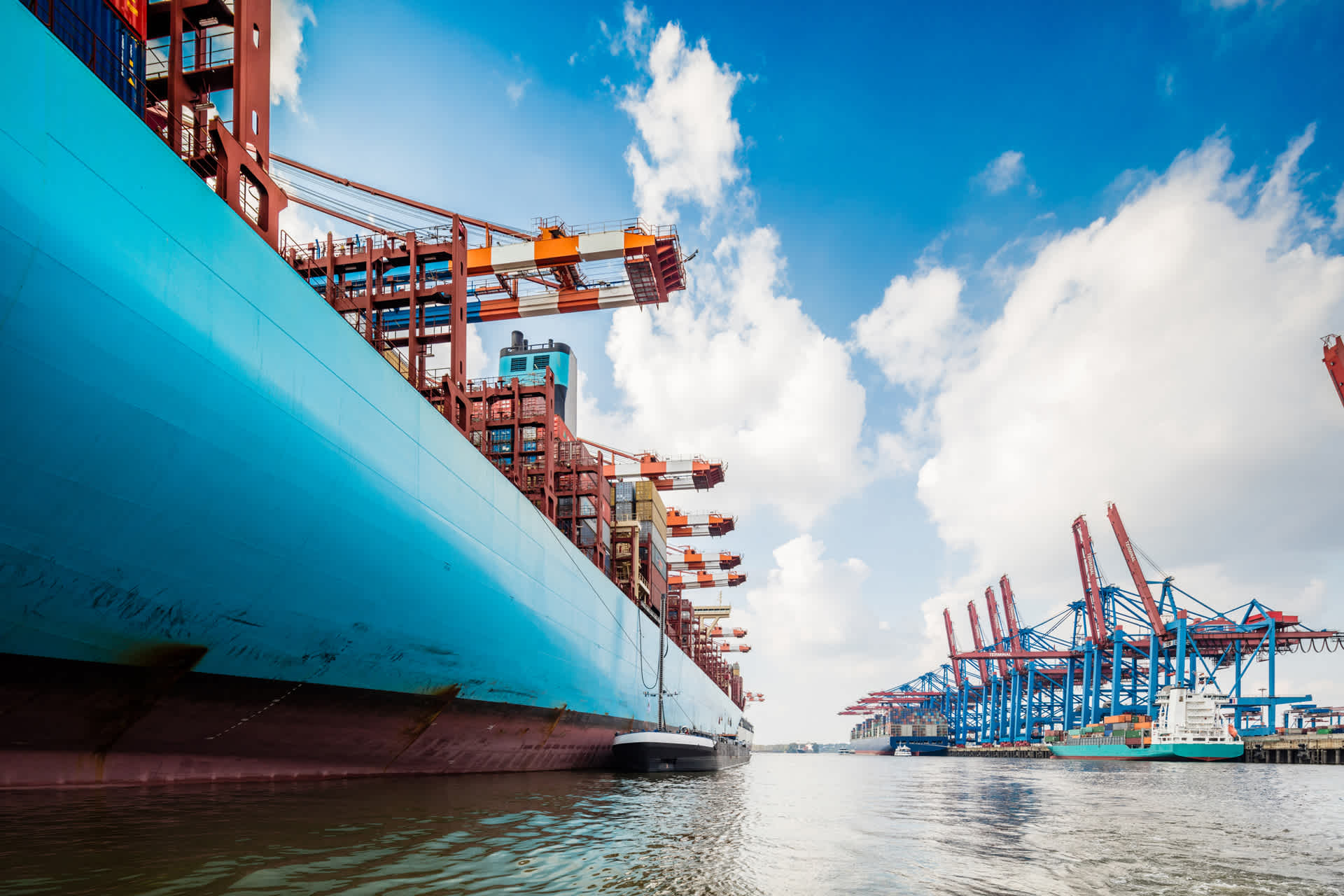Global Logistics Update
Freight Market Update: April 12, 2022
Ocean and air freight rates and trends; customs and trade industry news plus Covid-19 impacts for the week of April 12, 2022.
Freight Market Update: April 12, 2022
Logistics Rewired: How Parade and Reel Paper Stay In Stock and Unlock Growth | Weds May 4th @ 9:00 am PT / 12:00 pm ET
For fast-growth retail and ecommerce brands that are scaling rapidly, nonstop demand is just the start. Keeping your shelves stocked and customers happy is harder than ever with shipping delays, port congestion, capacity constraints and surging consumer demand. When will your next container arrive? Which SKUs are in shipments en route? What’s the ideal mix of ocean and air freight to ensure high-demand SKUs arrive in time for peak season? Join our webinar to learn how two innovative ecommerce brands, Parade and Reel Paper, are unlocking supply chain efficiency, reducing backorders and waitlists, and delighting customers.
Ocean Freight Market Update
Asia → North America (TPEB)
- Rise in Covid-19 cases in southern China causes increased uncertainty for suppliers and importers as Shanghai remains under lockdown. Ocean carriers continue to assess impacts to bookings, many of which are looking for replacement cargo originating from Southeast Asia due to current constraints and dips in shipment activity ex-China. Inventory replenishment efforts remain important and necessary for many importers and retailers ahead of traditional peak season. Severe congestion, equipment imbalances, sliding vessel schedules, port omissions, blank sailings, and increased fuel charges continue to create challenges.
- Rates Rate levels remain elevated relative to pre-Covid market with some softening in pockets. Premium market remains strong.
- Space Undercapacity, except in pockets
- Capacity/Equipment Critical/Severe Undercapacity
- Recommendation Book at least 3-4 weeks prior to CRD. Consider premium options. Be flexible in regard to equipment and routings. Check closely with suppliers to understand any Covid-related impacts or changes to production outputs and forecasts.
Asia → Europe (FEWB)
- Shanghai remains in lockdown though there is speculation that this is going to be lifted in certain areas. Other cities in East and North China are also facing rising COVID cases. This is impacting factory production, warehousing, and trucking availability although port terminals and trucking do continue to be fully operational. There is available space on FAK and spot across all alliances but carriers are still not open for more long-term named accounts. It is expected that there will likely be some port omissions and blank sailings announced by carriers as a response to recent developments.
- Rates Rates remain at a high level but have been on a downward trend since March and going into April due to a slowdown in the market.
- Space Tight space situation
- Capacity/Equipment Severe equipment shortage across all Asia origins.
- Recommendation Book at least 2 to 3 weeks prior to CRD. Be flexible in regard to equipment.
Europe → North America (TAWB)
- Congestion at USWC is finally improving with vessel waiting time decreasing to around 20 days only. Pressure has shifted now on the USEC with Charleston being the port most impacted by the congestion.
- Rates remain on the high side and expect to continue on this trend for the whole of Q2.
- Space Critical for both USEC and USWC due to ongoing congestion.
- Capacity/Equipment Capacity remains tight for both North Europe and Mediterranean services. Better equipment availability at port. Shortages remain at inland depots.
- Recommendation: Book 5 or more weeks prior to CRD. Request premium service for higher reliability and no-roll guarantees.
North America → Asia
- Vessel arrivals and available capacity remain fluid for USWC POLs. USEC situation sees Savannah operations improving however Charleston continues to be congested and subject to omissions on certain strings. Erratic vessel schedules continue to create void sailings and delays in schedules creating significant challenges with posted earliest return dates and vessel cut-offs at the port.
- Rates Limited GRI activity announced for late April and early May.
- Equipment Deficits on containers and chassis continue to plague IPI origins. Availability for standard equipment at ports has not been an issue for most ports but there have been shortages on 40’s at the port of Oakland.
- Recommendation Please place bookings 4 weeks prior to vessel ETD.
North America → Europe
- Significant congestion and vessel delays in Europe still remain in addition to the ongoing schedule issues for New York, Charleston, and Savannah that are now leading to bi-weekly port omissions. The port of Houston is also experiencing capacity constraints due to schedule delays and port congestion with one service being reduced from weekly to biweekly. US West Coast service to Europe is extremely tight due to void sailings and skipped ports caused by systematic delays. Pacific Northwest coverage for Europe is suspended indefinitely.
All carriers have issued a booking stop for shipments to Ukraine, Russia, and Belarus. - Rates No GRI announced for May as of yet.
- Equipment Deficits are still plaguing IPI origins. Availability for standard equipment at ports has not been an issue, but any special equipment is hard to come by.
- Recommendation Please place bookings 3 to 4 weeks in advance for East Coast/Gulf sailings and 6 weeks for Pacific Coast sailings.
Air Freight Market Update
Asia
- N.China: Air freight and supply chain disruptions continue as Shanghai remains under lockdown. Lockdown measures are expected to continue for the next 2-3 weeks. Nearby cities are also seeing Covid cases rising and some areas have begun implementing similar lockdown measures. Due to the limited availability of trucking resources, trucking rates are at high levels and seeing delays of around 3-5 days in pick up times. More than 80% of commercial freighter services have been canceled and airlines are looking into potentially shifting operations to nearby airports.
- S. China: Ex-Hong Kong flight frequency has still not recovered due to the Covid situation and war conflict, however, demand is improving since lockdown measures were lifted in Shenzhen. Cross-border trucking capacity is still very limited (around 20% of the original capacity) and air freight rates have dropped slightly because of the upcoming Easter holiday. Ex-Shenzhen market demand is improving but is highly affected by cross-border trucking capacity. Some shipments from Shanghai are also being re-routed to Shenzhen and air freight rates have increased compared to the week prior.
- Taiwan: Market demand is relatively stable, however, due to the PVG lockdowns and holidays in Thailand transit demand has dropped significantly. Ad-hoc capacity is available in the market, especially for weekday flights. Carriers announced another round of fuel increases effective from 4/16.
- SE Asia: Demand ex-Thailand continues to be soft after the quarter end with capacity manageable. Rates maintain at similar levels to the previous week. Malaysia is currently observing Ramadan so manufacturing facilities are operating at lower capacity resulting in a softer export market.
Europe
- Demand continues to be steady, and the upcoming change in season is seeing an increase in air freight requests for inventory to be stocked for Summer. To ensure goods arrive quickly, consider smaller batches of cargo across multiple uplifts.
- Rates are at a stable high due to capacity constraints, Jet fuel prices starting to decrease however the benefits will not be passed on till the market stabilizes.
- Freighter capacity is heavily reduced and booking to uplift window is approx 10-14 days.
- Deferred routings are still providing a viable routing option if already tight lead times can take it. We also see cheaper options on the market to secondary hubs where airlines have regular passenger flights.
- Less congestion at EU terminals, though high volumes, therefore a potential increased transit time.
Trucking & Intermodal
Asia
- COVID impact spreading: trucking operation has been heavily interrupted, especially in PRE: COVID continuous spreading in China brings huge challenges for trucking operations. Lots of cities have issued prevention regulations to restrict trucking operations. Transportation permits are required in a number of cities in PRE and multiple highway entrances/exits are closed. Negative COVID test results within 48/24 hours and a green health code will always be required and some cities even require truckers not to pass any cities with positive cases, which further constrain the eligible truckers in the market.
- Rates: Rates increased in the market with capacity drops, operations restrictions, and potential detention
- Capacity: Market capacity dropped a lot as each city/district has local COVID prevention regulations that may block truckers from other cities/provinces. Truckers that passed/stated in risk areas before the health code may change to yellow/red and blocked for trucking operations
Americas
- US Domestic Trucking
- Demand is dropping, creating more capacity for the first time in quite a while. The Outbound Tender Volume Index has fallen below 14,000 to 13,783, and the Outbound Tender Rejection index has fallen to 16.10%. There are less tenders and providers are accepting more of their contracted freight.
- The National DAT Load-to-Truck ratio has dropped to (4.44 loads per 1 truck), which represents the lowest LTT ratio that we have seen since January of 2021. While low, it is still nowhere near a balanced market, as a balanced market is represented by a LTT ratio closer to (2.5 to 1).
- It remains a possibility that the market we are seeing is a return to seasonality, albeit a slightly delayed return that was impacted by severe winter weather and Omicron in January and February. And truly, the answer could be both, we could be seeing the market drop off as consumer spending patterns change. A highly fragmented carrier market remains which is highly susceptible to market-induced capacity swings.
- The South East and Houston, TX markets are thought to be stronger than their surrounding market, particularly when the South East hits produce season in Mid-April/May Produce Season will cause a capacity crunch in these areas for dry van and especially reefer freight, causing spot rates to rise.
- The Midwest is cooling rapidly. Chicago is falling below equilibrium at (1.58 to 1), Detroit (2.16), and Milwaukee, WI (2.44) also fell below equilibrium, and as a by-product, we should see spot rates accelerate their decline out of these markets. The North East cooled, with Elizabeth, NJ (4.56), Philadelphia, PA (3.46), Harrisburg, PA (4.20), and Baltimore, MD (4.24) continuing to inch down.
- Plenty of markets increased as we continue to see some seasonality as Norfolk, VA (port market) hit 8.52 to 1, Miami, FL (port market) 6.56 to 1, Jacksonville, FL (port market) 8.24 to 1, and Los Angeles, CA moved back up to 6.24 to 1.
- US Import/Export Trucking
- Market Trends
- Congestion continues across the majority of East Coast ports, however, some markets in recent weeks have seen a slowdown in inbound container volumes.
- Limited warehouse receiving capacity continues to be an issue as inventory levels increase. Backlogged containers waiting to unload absorb valuable chassis equipment and yard space, which in turn disrupts trucking productivity.
- Port of LA/LB approved a clean truck fee to be assessed on cargo owners beginning April 1, 2022. The plan is designed to expedite the introduction of zero-emission vehicles in the port complex.
- The fee is $10 per TEU, or $20 for all containers longer than 20'
- Profits raised from the fee will be used in part to provide direct grants to truckers for zero-emission vehicles.
- Both new and existing cartage providers have doubled down on their air export service. Same-day pickups are consistently achieved in each of our major markets. We continue to build out the linehaul service to support expedited movement on the backhaul to our major gateways.
- Market Trends
- Q2 2022 Outlook
- Volatility in FSC is expected to continue as Diesel prices remain unstable and on the raise.
Customs and Compliance News
CIT Clarifies Extent of Companies’ Use of the Domestic Petition Process
The Court of International Trade (CIT) dismissed a case from a U.S. manufacturer against Customs and Border Protection (CBP), wherein the manufacturer sought customs clearance information from two importer competitors. The CIT ruled that CBP is not required by law to disclose entry-level classification information declared by importers, but only must disclose classification information CBP “imposes.” Additionally, CBP cannot rule on any issue before the CIT and the Court of Appeals for the Federal Circuit in active litigation.
President Biden signs Bill on Russia, Belarus Trade Relationship
On April 8, President Biden signed into law a bill suspending permanent normal trade relations with Russia and Belarus, thus placing all imported products of Russian and Belarussian origin into column 2 of the Harmonized Tariff Schedule of the United States (HTSUS). Subject merchandise imported with column 2 tariffs is subject to higher rates duties imposed by the Tariff Act of 1930.
The U.S. House and Senate Leadership Select Members for Conference on Bill on China Trade Policy
The four leaders of each chamber of the U.S. Congress selected members to serve on the bicameral conference committee to negotiate a final compromise bill on China Trade Policy. From the House Ways and Means Committee, seven Democrats and five Republicans will serve on the committee. From the Senate Finance Committee, five Democrats and seven Republicans will serve on the conference committee.
Factory Output News
- Mainland China Shanghai’s Covid situation strikes local factories - affecting vehicle production of big players like Tesla Source
Taiwan chip makers are dealing with up to 18 months delay for production equipment Source - Cambodia IFC program and suppliers work towards sustainability and greater productivity Source
- Thailand automobile export falls due to shortage of microchips Source
- Indonesia is unlikely to meet Europe’s coal demand if there are sanctions on Russia’s coal, as they are reaching their production limits Source
- Sri Lanka Anti-Government Protest continues in Sri Lanka; food, fuel, medicine, and electricity becoming increasingly scarce under the financial crisis Source
Freight Market News
China Lockdowns Lead to Increase in Blank Sailings
According to The Loadstar, the continued lockdowns and Covid restrictions have slowed manufacturing and prompted spot rates to decline. Right now, ocean carriers are preparing to announce a number of blank sailings, but the congestion is only expected for the short term. When China’s lockdowns ease, there will likely be a new wave of congestion as rates pick back up.
Russia Conflict Prompts Dip in Air Cargo Volumes
Both Russia’s invasion of Ukraine and the recent Covid-related lockdown in Shanghai have impacted the air cargo market, already struggling to return to pre-pandemic capacity levels - as reported by SupplyChainDive. Air cargo volumes fell 4.5% from March 2021, with capacity dropping 4% and rates remaining at record-high levels.
Flexport Research Updates
Find Another Way - Rail Networks During the Ukraine Conflict
How relevant is rail to Asia-Europe trade? What’s happening during the Ukraine conflict? Are there alternatives? This piece from the Flexport Research team explores the impacts on this modality, which include the fact that automotive and capital goods shippers are more exposed than most and will have to find alternatives - principally via ocean shipping - during the conflict.
Dual-Motored Engine - Flexport Weekly Economic Report
This week’s Economic Report dives into the market-shaking news this week about how, and how fast, the Fed is going to tighten, taking a rarely-tried approach of balancing hiking the policy rate and selling off assets.
Air Timeliness Indicator
The Air Timeliness Indicator measures the amount of time taken to move airfreight along two major trade lanes from the point of consolidation to arrival at final destination. Last week delays along the Transpacific Eastbound (TPEB) leveled out after a continuous 10-week decline, staying level at 11.2 days in the four weeks to April 10. The Far-East Westbound lane (FEWB) improved to 9.8 days in the four weeks to April 10.
Both face disruptions from the resurgence of COVID-19 and the related lockdowns in China. While the airports in Shanghai remain open, factory and trucking operations have slowed significantly so some care is needed in interpreting the figures in the next few weeks.
Ocean Timeliness Indicator
The Ocean Timeliness Indicator similarly measures transit time for ocean freight along the same two trade lanes. In the past week, the FEWB hit a new record high, increasing to 123 days largely due to increased handling times in Asia. The TPEB Increased after last week’s slight dip, reaching 109 days.
Logistics Pressure Matrix
Flexport’s Logistics Pressure Matrix (LPM) gathers 10 data points in an attempt to provide a picture of the challenges facing logistics networks from the demand side and a view of ongoing activity on US-inbound routes. In the latest update, the key activity measures of shipping rates, ocean timeliness, and airfreight timeliness all suggested a relaxation of pressure on logistics networks.
Freight Market Update is a complimentary service from Flexport, the modern freight forwarder. If you're not already a subscriber, we invite you to subscribe here.
Please note that the information in our publications is compiled from a variety of sources based on the information we have to date. This information is provided to our community for informational purposes only, and we do not accept any liability or responsibility for reliance on the information contained herein.


